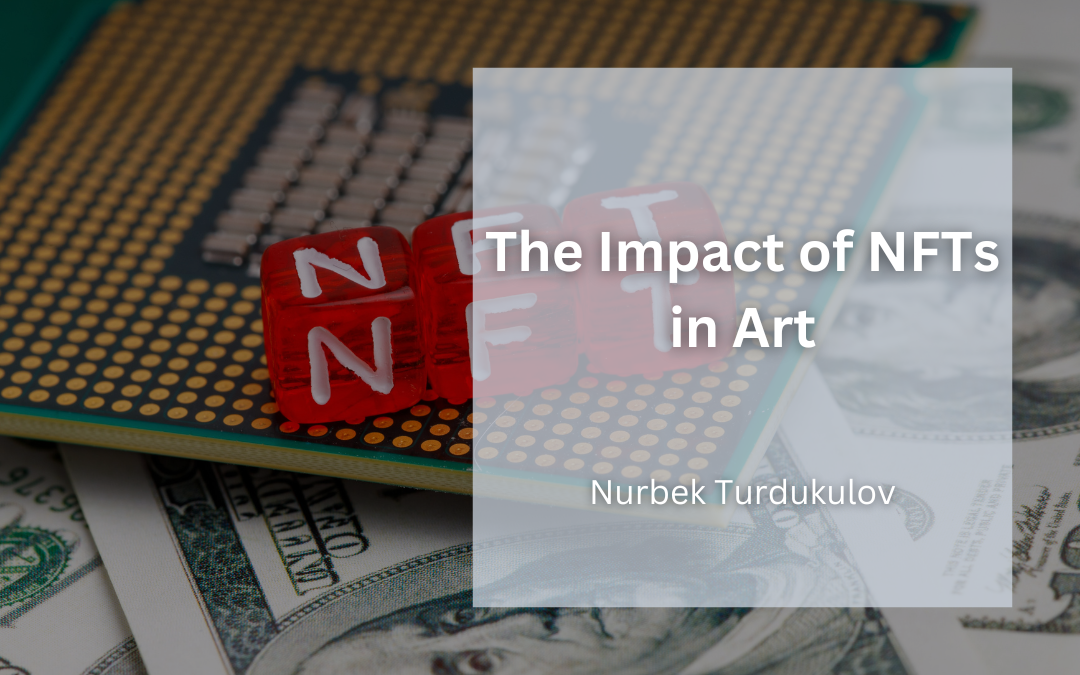Over the past year, the topic of non-fungible tokens (NFTs) has been hot. While much of the discourse surrounding these digital assets has been focused on the investor side, there has been a lack of discussion about the artist’s perspective. This is because the artist’s perspective is not always represented the same way as the investor’s. Understanding the true value of NFTs could help investors make informed decisions.
Like cryptocurrencies, NFTs are traded on the blockchain. While they are similar to digital tender, they are also different from other types of assets. For instance, unlike other digital assets, NFTs are not fungible. This makes them an interesting alternative to traditional assets.
Unlike other digital assets, NFTs are not fungible. They are unique and can’t be traded with a like entity. Buying an NFT is logged on the blockchain and gives you ownership of the asset.
The rise of NFTs has revolutionized how art transactions are conducted. For instance, until now, there has been a lot of money flowing through the industry, which has led to the traditional way of doing business. The blockchain network and NFTs have allowed the industry to become more regulated.
Through blockchain technology, the creator and the buyer of an NFT can now have complete details about the asset’s primary market. This contract, which is protected by cryptography, also provides information about the various changes in the ownership and value of the asset.
Providing this information to artists has created a more transparent and decentralized art market. This is different from the traditional way of doing business, involving commercial galleries and auction houses.
Due to the emergence of NFTs, marginalized artists have gained an opportunity to receive relevant information and pricing in exchange for authenticating their works on the blockchain. This system benefits both the sellers and the collectors as it allows them to easily verify the authenticity of the works.
Besides being able to decentralize the art market, NFTs have also allowed artists who use platforms such as YouTube and Instagram to earn money by distributing their content. These artists, often marginalized, have long been able to distribute their work for free due to their scarcity. With the help of blockchain technology, they have made their content monetizable.
Many creators are skeptical about scarcity as NFTs can be easily downloaded or posted on the internet. Although this doesn’t mean that they are the creator’s property, it allows one to possess an illegal copy of the work.
Like the owners of a red Ferrari, an NFT differs from the other types of assets as it provides a unique identity. Unlike other digital assets, it is protected by cryptography. This means it can prove the car’s ownership in court. This is similar to how the car is protected in a court of law. An NFT is also different from the other types of assets as a unique token protects it.
Due to the nature of cryptography, it is not always possible to fully understand its protection. This makes it an ideal framework for web content creators looking to profit from their work. By providing a secure and unique framework, NFTs have allowed them to create a compensation system for different kinds of artists. This has allowed them to challenge the traditional definition of art.
The royalty system is one of the most prominent innovations that NFTs have allowed creators to make. This system is created through the ability of blockchain technology to track every transaction. It allows creators to set a royalty percentage the first time they use an NFT. It then increases the royalty rate on every subsequent purchase. This system is a revolutionary innovation as it provides artists with commercial rights even after selling their creations.
The ability to make a quick income is another innovation that NFTs have allowed creators to create. Before, data such as music, videos, and scripts could only be streamed and used on platforms such as YouTube, Instagram, and Spotify. With NFTs, files such as mp3, mp4, and jpg can now be bought and owned exclusively.
Montreal-based artist Jacques Greene used the blockchain to release a six-second teaser of his new song to capitalize on the new ownership structure. He then followed up with a series of tweets about his plans to sell the song’s publishing rights.
The quick transfer of the rights through the blockchain-enabled Greene to make a total of $23,000 in just six hours. This is a huge amount of money for an artist who only had around $27,904 in royalties from his 2011 track “Another Girl.”
Despite the high incomes that NFTs have allowed creators to provide, they also face the threat of new entrants who want to take over the pie. For instance, Nike is planning on entering the music industry by developing a loyalty program based on the blockchain. This new program, called Cryptokicks, is designed to provide better security and a scarcity-based approach to marketing.
Through the program, customers will receive a digital asset linked to the identity of the shoe they buy. This ensures that the product they’re purchasing is real and that the digital asset is linked to the production of the shoe. This concept of scarcity is also beneficial for the marketing of the product.
Despite the widespread use of NFTs, it is not yet clear if they can completely replace the traditional art industry. Instead, they have provided a framework that enables creators to earn money from their work. Through their decentralized platform, NFTs have been able to help various organizations, such as filmmakers and musicians, gain a competitive advantage.

